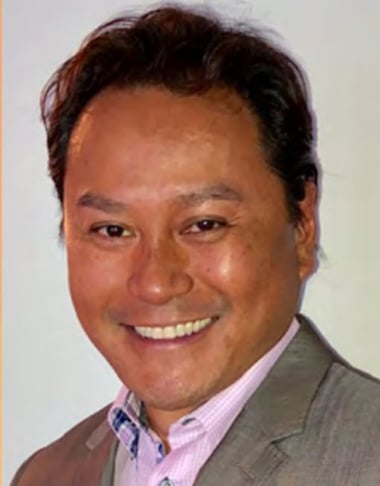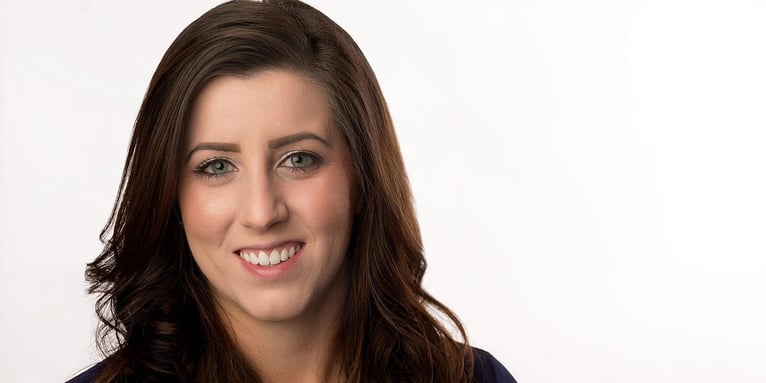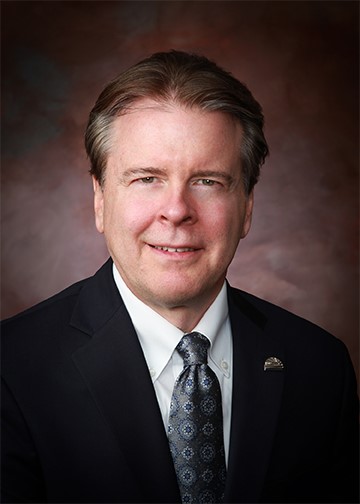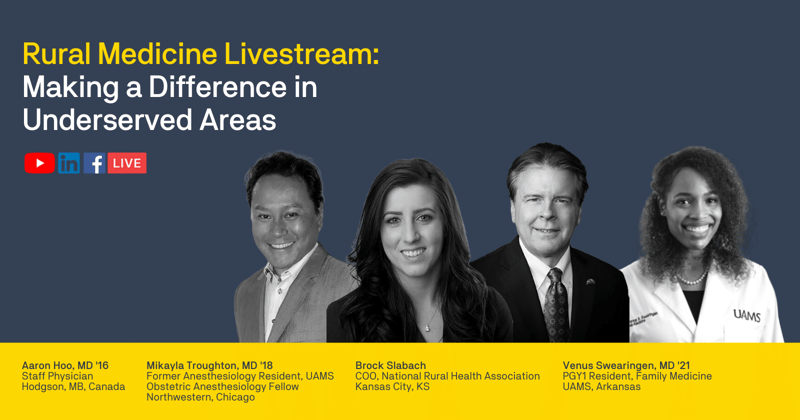What is rural medicine and why is it something current and prospective students should be interested in? UMHS explores these issues in “Rural Medicine Livestream: Making a Difference in Underserved Areas”.
Three UMHS graduates with experience in rural medicine in North America and Brock Slabach, the Chief Operating Officer of the National Rural Health Association, discuss why doctors are in great demand in rural communities and how graduates of Caribbean medical schools can fill the void while also earning good salaries and benefits.
Patients in rural areas are often underserved because they are far from big-city hospitals with the staff and technology necessary for proper medical treatments. Rural patients include the elderly and low-income people who lack health insurance and access to medication and convenient pharmacies. Rural communities often have one small county hospital to serve huge geographic areas and are not equipped to treat patients experiencing catastrophic medical events, such as the COVID-19 pandemic. Many misconceptions have discouraged some doctors from pursuing rural medicine, but the fact is that doctors in these communities often earn high salaries, enjoy great benefits and the same amount of days off, holidays and leave time that doctors in large cities do.
During “Rural Medicine Livestream: Making a Difference in Underserved Areas,” viewers will meet three UMHS grads with experience working with rural patients as well as rural health expert Brock Slabach. We spoke to Dr. Aaron Hoo, Dr. Mikayla Troughton, Dr. Venus Swearingen and Mr. Slabach about what it's like being a doctor in rural communities and why there is such a need for physicians in these underserved areas of North America.
 Dr. Aaron Hoo. Photo courtesy of Dr. Hoo.
Dr. Aaron Hoo. Photo courtesy of Dr. Hoo.
Dr. Aaron Hoo’s work in rural Manitoba
Dr. Aaron Hoo (2016) was the first UMHS graduate to match directly into the match in the second iteration of CaRMs (Canadian Residency Matching System) Family Medicine residency.
He currently divides his time between his practice in Vancouver, British Colombia and rural Hodgson, Manitoba, Canada (a two-hour drive north of Winnipeg). Two weeks each month, Dr. Hoo flies to Winnipeg and drives up to Hodgson to work as a Staff Physician at the Percy E. Moore Hospital, a 16-bed facility.
“We service a population area of about 15,000,” he said. “So, we're strained and stretched from a service provider perspective, and of course, with the current closures with a lot of the ERs and the Canadian hospitals and healthcare staff leaving the profession due to stress, etc., is just putting additional stress on the workforce currently. So, unfortunately, the environment that I'm in right now is pretty tough just in the sense of the workload and the complexity of the patients that we see. We service a lot of the First Nations [Indigenous] community and people with multiple comorbidities who end up not having a lot of follow-up or have been [unable] to follow up with their specialists. Since COVID, not coming into their appointments, and as a result of that, ending up with pretty decompensated healthcare issues in the [emergency room] and also in the clinics.
"As a general practitioner in a rural community, we end up having to manage pretty much anything and everything as the first line, if you would, of healthcare providers that see these patients. We get the weird and wonderful. I've seen methemoglobinemia here, which is so rare I couldn't believe it, from cocaine usage; very bizarre, from that, from people with very strange types of cancers, very strange genetic disorders, congenital birth defects, breech deliveries, because they haven't had prenatal care; the weird and wonderful. So, because of the lack of preventative care and lack of resources from allied healthcare, we end up having to manage a lot of these chronic diseases that end up decompensating from lack of regular care, and we end up having to sometimes function as internists in our small community hospital because the tertiary care hospital is just so overloaded right now.”
The particular First Nations community in Manitoba that Dr. Hoo treats has many healthcare needs.
“Drug abuse amongst the First Nations community is very prevalent with mental illness and suicide. We do see crystal meth usage. We also see a lot of cocaine toxicity, cocaine-induced psychosis. From our perspective, what we would end up doing is basically stabilizing them in our ER and then shipping them out to the tertiary care centers, whether we would have to recess them in our recess bay, call in our air ambulance to get them out. But that's a lot of what we end up doing in the [ER] right now in our local community. So, in a small facility, our role is just to stabilize our patients, package them up, and ship them out.”
Dr. Hoo is fortunate to work with a great team at Percy E. Moore. Although it is challenging working with rural patients with many health issues, it is gratifying knowing he is able to help people in need, particularly patients with substance use problems.
“I'm very blessed in the sense that the crew—the physician cohort that I work with as well as the nurses that I work with—are pretty fantastic, and I could not be doing this work without my allied healthcare team as well as our physician team. So, having that kind of support from allied care and colleagues is essential. So, for me, that has been a big factor. From a patient care perspective, what has been rewarding has been establishing a chronic pain clinic in the clinic that I work in, in the hospital as well, for patients who have had chronic pain secondary to trauma or secondary to degenerative joint disease, etc,, and providing some allied care from that perspective. So, that has been personally rewarding for me. And we also established a substance use disorder clinic with methadone and Suboxone in the community to address the significant opioid crisis. That has also been very rewarding. So, I'm involved in that clinic as well. Those specialty clinics, I find, have been a bit of a godsend because it allows us to have more dedicated one-on-one time with the patients, as opposed to just rushing through a 15-minute appointment, which there's just no way we can establish those kinds of outcomes.”
Working as a doctor in a rural setting is not for everyone.
“It does take a lot of commitment. I appreciate that we want to attract people into this realm of medicine, but that has to be balanced with a work-life balance as well, and that, of course, is difficult.”
Medically Underserved Areas Guide: Where Doctors Are Needed.
Learn more about MUAs and why you should consider serving these communities with this Free PDF guide.
 Dr. Mikayla Troughton. Photo courtesy of Dr. Troughton
Dr. Mikayla Troughton. Photo courtesy of Dr. Troughton
Dr. Mikayla Troughton’s work with rural patients in Arkansas
Dr. Mikayla Troughton (2018) recently completed an Anesthesiology residency at the University of Arkansas for Medical Sciences (UAMS). Although the hospital was located in Little Rock, the capital city of Arkansas, Dr. Troughton worked with a variety of patients from underserved areas of Arkansas and neighboring states like Tennessee. She is currently an Obstetric Anesthesiology Fellow at Northwestern University in Chicago. Next year, she will start a fellowship at the University of Minnesota, working with an underserved patient population similar to what she encountered in Arkansas.
Why work as a doctor in a rural setting?
“I think that the clinical experience is unparalleled,” Dr. Troughton said. “I think you become a more competent physician by dealing with all of these things that you are the first point of contact for. One of my biggest goals when I went into my residency was I want to be able to take care of any patient when I leave this residency, and that is what I accomplished out of being at the University of Arkansas. There are truly very few patients that I would be scared to put to sleep right now [before surgery]. And it translates to the training, the clinical exposure, and the clinical training that we got as residents. Do I want to do a liver transplant on my own? Absolutely not. Would I love to have a cardiac anesthesiologist with me to do a liver transplant? Absolutely. But that's to say that I've done liver transplants, I've done cardiac bypass cases on very sick individuals, so those patients don't scare me anymore. So, that's the type of exposure that you get, and I just think it makes you a better physician. Speaking in terms of pay, you also have to look at where you're living. So, if the cost of living is much cheaper to be in a rural area and you are being paid more— which a lot of these places, the University of Arkansas—they pay relatively well. The benefits are phenomenal there.”
Compensation varies from place to place, but Dr. Troughton said she finds many rural health areas offer great salaries and good benefits to attract doctors to areas where they are really needed.
“A lot of these places are actually paying well to get people to come there because they need providers. They need people to be there, so they are going to pay you more. They'll pay living expenses for you to go to some of these places. So, I think that that's important for people to realize as well. I'm living in Chicago right now and my pay is a lot less than what I'm going to be making next year when I move to Minneapolis and [work for] an underserved population again. So, that being said, I'm going to live in Minneapolis because I wanted to live in sort of a city. Minneapolis is a pretty big city, but the patient population, again, that they serve is similar to the Arkansas patient population. You have Mayo Clinic there as well, which is about an hour away in Rochester. The people with the cushy insurance in Minnesota go to Mayo; they don't go to the University of Minnesota. So, it's going to be a similar kind of situation over there, and I'm pretty excited to have that opportunity again.”
 Dr. Venus Swearingen. Photo courtesy of Dr. Swearingen
Dr. Venus Swearingen. Photo courtesy of Dr. Swearingen
Dr. Venus Swearingen's Family Medicine residency at UAMS in Arkansas
Last year, California native Dr. Venus Swearingen (2021) started a Family Medicine residency at UAMS in Arkansas. She works at the Washington Regional Medical Center in Fayetteville, Arkansas, and Northwest Medical Center in Springdale, Arkansas.
“I am excited to continue my medical training at UAMS,” she said. “This program offers an unopposed Family Medicine residency training, allowing me the opportunity for increased exposure to intriguing cases and procedures. I am also excited to learn in a diverse and underserved population, exposing me to a broad spectrum of diseases and pathologies.”
Dr. Swearingen decided to pursue a Family Medicine residency because this area of medicine encompasses many types of health care, particularly in rural areas.
"There are health disparities in rural areas. Roughly 1/5th of the American population live in rural areas, yet only 1/10th of doctors practice there. The majority of residents in rural areas have to travel hundreds of miles for medical care. This complicates medical care because there is less access to medical treatments and professionals, leading to more medical-related complications and deaths.”
 Brock Slabach. Photo courtesy of National Rural Health Association
Brock Slabach. Photo courtesy of National Rural Health Association
Brock Slabach, Chief Operating Officer at National Rural Health Association
Brock Slabach is the Chief Operating Officer at the National Rural Health Association (NRHA) in Kansas City, KS. The NRHA is a membership organization with over 21,000 members nationwide. Mr. Slabach was interviewed by UMHS last year for our Medically Underserved Areas Guide. He spoke to UMHS about the upcoming livestream.
“We have nine different constituency groups that are part of our composition, our largest and most in terms of number is the hospital and health systems,” he said. “And then we have rural health clinics, federally qualified health centers, a clinical CG, which is largely oriented around clinicians of all types, not just physicians, but also nurses, PT, OT. And then we have public health CG, and it's been pretty active of course, during the pandemic. And then we have different councils."
NRHA has individuals working at state levels to work on rural issues for certain states.
“An example would be somebody maybe working in mental and behavioral health that has a rural focus may join our association as a state person.”
Mr. Slabach has been working with the NRHA since 2008. Prior to that, he was the administrator of the Field Memorial Community Hospital in rural Southwest Mississippi in Centreville.
“I spent a little over 20 years there. We had four provider-based rural health clinics, one of which saw over 40,000 encounters a year, very busy primary care practice. Also, during that time there, we became the employer for all of our physicians. I was doing the recruiting and of course, trying to retain the physician workforce. Of course, we had advanced practice providers, so that was something else that we had as part of our compliment. We did general surgery at our facility and until 2003, we did obstetrics.”
During the UMHS livestream, Mr. Slabach will discuss common misconceptions about rural medicine. What are some of the biggest myths about rural medicine?
“I think the biggest thing that people are not aware of is, of course, salaries are competitive,” he said. “So, you don't have to necessarily sacrifice in salary and benefits in order to work in a rural area. I think that's one myth or one misconception. The next is that most rural hospitals have worked out call schedules so that you're not like the old-style rural doctor that was basically worked 24/7, 30 days a month and with one day off, maybe. So that is no longer the case. I think most of them have resolved some of those workforce issues through having hospitalists and other professions that can help.”
Working as a doctor in a rural area does require a sort of “missionary” mindset, but there are myriad rewards.
“You're not a cog in a wheel—you are the wheel,” Mr. Slabach said. “It’s usually the professionals, the people that practice at rural communities are still looked upon with great amount of respect. Their contribution to the communities is very highly valued. And I think that being part of the community is something that I know is very fulfilling and satisfying. I grew up in rural Kansas, so I was always used to this. But you go to the grocery store, like in my community, in Mississippi, and you see patients that you know that were just hospitalized two weeks ago. So, you end up in the aisle having a conversation for 20 minutes about things that in the city you're never going to have in terms of an interaction like that. I would go to the post office at lunch because I had a P.O. box and I'd get my mail. And it would usually end up being a 15 or 20 -minute experience there because you see people that you know and you're catching up on things.”
Housing for new doctors is also an issue in both rural and urban areas. Mr. Slabach said many areas try to make “recruitable” communities
“Some communities have actually bought some houses that they're using for recruitment to be able to get someone started out in and helping them to get started. There's been some creative ways that I've seen some communities work on that problem.”
What about the workload for doctors in rural areas?
“I think that you could be as busy as you want to be. I know I had some physicians at my facility that were in the top, oh, 10% of wage and salary, but they were seeing quite a few patients a day. But that was by their choice and they were reimbursed on volume. So, it worked out to be their great advantage. I think that because these are largely health professional shortage areas, there's no shortage of business, and that's good.”
“I sometimes start with this is that if there's somebody that's interested in a rather missionary spirit, that's what it takes almost in some ways to want to go to a rural area, because obviously these communities have high need. The populations are typically underserved, which means that they're older, poorer and sicker. So, the care that's provided to patients in these areas tend to be more complicated than what you would see on an average in an urban practice. But then on the other hand, you have a lot of meaningful interaction. If you want to get involved in social drivers of health and start working in the areas of, like you were talking about earlier, equity, looking at the environment, education and behavioral issues—if you want to get involved in some other aspects of those social drivers of health—you have a real opportunity because there's just such a need. So, you can kind of expand your horizon into other things than just medicine, as much as you want or not want.
How does working in rural healthcare settings differ from large cities?
“I think that that's what's missing in so many of our urban experiences now is those feelings of connection and being a part of something bigger than just going in nine to five and looking at throats and ears and that sort of thing. I think that's kind of maybe rounding out that a little bit more and I don't know if that sounds sappy or too idealistic, but I think you get out of it what you put into it—that's been my experience.”

Scott is Director of Digital Content & Alumni Communications Liaison at UMHS and editor of the UMHS Endeavour blog. When he's not writing about UMHS students, faculty, events, public health, alumni and UMHS research, he writes and edits Broadway theater reviews for a website he publishes in New York City, StageZine.com.



















